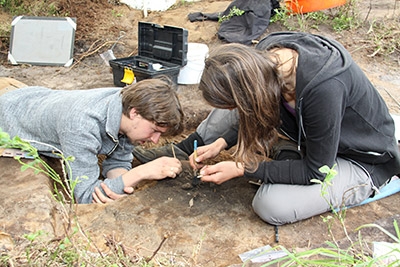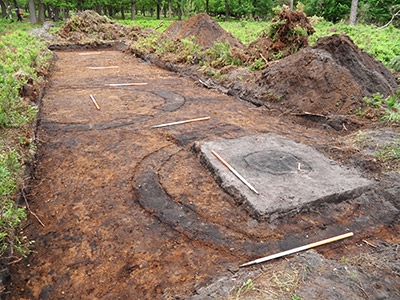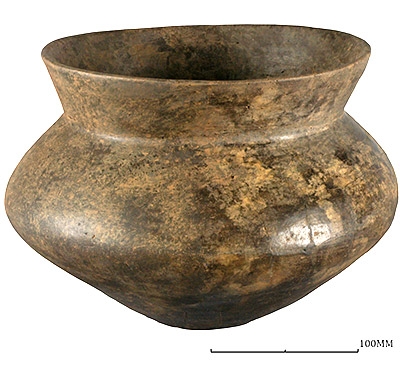Breaking and making the ancestors
Arjan Louwen (MA) will start a PhD research project on the social and ideological aspects of Late Bronze Age and Early Iron Age cremation graves in continental Northwest Europe (1100-500 BC): Breaking and making the ancestors. Making sense of the inconspicuous 99% of urnfield graves.
His research is funded by the Dutch Science Foundation NWO (dissertations in the Humanities). Project leader and main supervisor is dr David Fontijn, promotor is prof. Dr Harry Fokkens.

The thousands of cremation graves of the so-called urnfields (1100-500 BC, Late Bronze Age/Early Iron Age) are the most prominent funerary legacy of prehistory in north-western Europe. Most attention of researchers and the public goes to the rich (and famous) “chieftains’” graves marked with enormous barrows and filled with lavish grave goods. But these make up only 1 % of the total. The other 99% is anything but spectacular and therefore usually seen as a simple and uncomplicated funerary practice for the majority of ‘common’ people. This study is about these unobtrusive 99% of graves.
The question is: are the inconspicuous graves that make up 99 % of the record really that simple? Can we use the data to discover more about the ways in which the mourners represented people at death, as ancestors? The ‘chieftains’ graves tell interesting and complicated stories about how people thought about their famous ancestors, how they needed to be equipped with objects, how their identity at death was constructed. Can we detect similar stories also when we study the 99% ‘normal’ graves more closely? We think so!

Several researchers of urnfields have already noted odd things. For instance cremated bodies are often represented in the graves by a very incomplete set of cremation remains, sometimes only by one tiny piece. Objects too, are often bent or broken, sometimes partly burnt, or unburnt. Often this has been explained by un-careful collection of bones at the pyre (they are never cremated to ash), or by care-less excavation. But there are many signs that there is more to it. This study starts with the hypothesis that token depositions of human bone and deposition of incomplete objects suggest that graves were shaped in a complex process of transformation, selection and arrangement of bones and objects. The project aims to make sense of ancestral identity as constructed in the grave, by studying it as a meaningful composite artifact of burnt human remains and (un-) transformed things: breaking and making the ancestors.
Not only the incompleteness is important, also the selection of objects that accompanied the dead. These too are a clue to new insights. Generally researchers focus on what is presented in the grave, but the present study also discusses what was not deposited in the grave. The idea is that by contrasting settlement, deposition and burial deposits it can be derived which categories of objects were selected and therefore probably meaningful for the construction of ancestral identities. They may even tell us something about values that were important during life, values that were symbolized by these objects.

Using this novel approach, the study holds the promise to become an important contribution to the study of dissolution and transformation of identities at death. The outcome will be relevant to the general public, as it may reveal rich prehistoric practices behind the most ubiquitous but seemingly poor remains of our prehistoric predecessors. But it will also set the agenda for future urnfield research in northwestern Europe.
The basis for this research is the published data of over six hundred urnfield cemeteries in the Netherlands, North Belgium and northwest-Germany. The candidate will chart patterns in selection, treatment and transformation, arrangement and positioning of objects and human remains and things in a grave. These patterns will be used to infer how ancestral identities were constructed and whether age/sex classes were treated differently.
